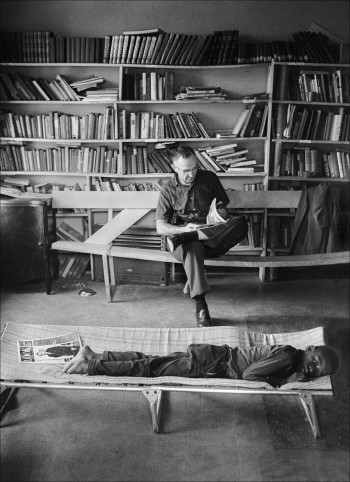 Civil rights photographs by Jim Lucas go on exhibit Feb. 9 at Delta State University’s Charles W. Capps, Jr. Archives & Museum.
Civil rights photographs by Jim Lucas go on exhibit Feb. 9 at Delta State University’s Charles W. Capps, Jr. Archives & Museum.Following the debut at Tougaloo College, the photographs of the late Jim Lucas of Jackson, Miss. will be exhibited at Delta State University’s Charles W. Capps, Jr. Archives & Museum building.
The exhibit opens Feb. 9 and will run through March 31, coinciding with Delta State University’s Winning the Race conference.
On Feb. 16, Dr. Robert C. Luckett will deliver his lecture “The Mississippi Plan and the Rise of Jim Crow” during the noon hour in the Lucy Somerville Howorth Seminar Room.
The exhibition’s curator, Jane Hearn, will deliver a gallery talk on March 30 at 1 p.m. as a part of the pre-conference offerings for the WTR conference. These events are free and the public is encouraged to attend.
Through a generous grant from the Mississippi Humanities Council and funding provided by the conference committee, the exhibit is free and open to the public Monday–Friday from 8 a.m. to 5 p.m.
Lucas, a student during the early 1960s, progressed from carrier boy to photographer and lab man for the local newspaper. In 1959, at the age of 14, his first photo was published in the Jackson Daily News.
His craft with the camera led him to take photographs during his years at Murrah High School and Millsaps College, where with photojournalistic style he was as much school documentarian as he was student.
In 1964 Lucas was a student at Millsaps when the nation was focused on Mississippi and the search for Schwerner, Goodman and Chaney, civil rights workers missing in Neshoba County.
During those turbulent times these events drew national press to Jackson and Lucas had the opportunity to meet and assist film cameramen from CBS News. Using his still camera he tried never to miss a visual story of his own, and soon became a “stringer” for UPI and Time and Life magazines.
In 1968, Lucas was drafted and spent his basic training in the Army at Fort Campbell, Ky., followed by special training in the Army Signal Corps at Fort Monmouth, N.J. During his deployment in Vietnam he shot non-combat footage for the Army, gaining experience and commitment for his future career as a film cameraman.
In 1969 he was distinguished by the Department of Defense as the Military Newsfilm Motion Picture Photographer of the Year.
Upon his return to Jackson in 1973, he pursued a variety of freelance film jobs including commercial advertising, football filming and freelance newsreel work for UPI and NBC. A highlight of his career was shooting several stories for “60 Minutes.” His first job on a feature film was Robert Altman’s “Thieves Like Us” as an electrician, and his goal became to work on feature films as a director of photography.
The next years of his career included television and feature film work, almost always outside of Mississippi, including films such as “Honeysuckle Rose,” “The Long Riders,” “Brubaker” and “The Border.”
Lucas became known for the excellence of his technical ability and advanced to camera operator and second unit director of photography. While on location with the film “Barbarosa,” he was in a fatal automobile accident and died Oct. 19, 1980.
The Lucas Collection includes an extensive number of negatives, prints, personal narratives and a cache of memorabilia. The exhibit at Tougaloo is a sample of images Lucas made during the civil rights movement including events such as the James Meredith March for Freedom in 1966, the Wharlest Jackson funeral in Natchez in 1967, and the Senate Hearings to Evaluate Poverty in Jackson in 1967 with the subsequent trip by Senator Robert Kennedy to the Mississippi Delta.
The exhibit was created and curated by Hearn, who was married to Lucas at the time of his death. Red Morgan, photojournalist and commercial still photographer, provided additional direction. Their ongoing collaboration aims to archive Lucas’ extensive collection, and pay tribute to a passionate and skillful young photographer who grasped the significance of the events around him and conveyed his point of view in sensitive visual language.
This project was made possible by a grant from the Mississippi Humanities Council, through support from the National Endowment for the Humanities. Any views, findings, conclusions or recommendations expressed in this exhibition do not necessarily represent those of the National Endowment for the Humanities or the Mississippi Humanities Council.
To schedule a tour of the exhibit, contact the University Archivist, Emily Jones at 662-8464780 or e-mail ejones@deltastate.edu.

